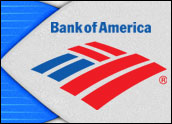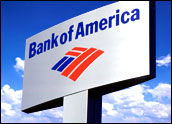
Bank of America has decided to back off from a controversial fee that it announced in September: a US$5 ding every month for consumers who use their debit cards to make a retail purchase. The plan had endured sustained consumer outrage since it was publicly revealed.
Bank of America, which did not return a call to CRM Buyer in time for publication, has cited customer concerns over the fee and a changing competitive marketplace as the reasons behind its about-face.
Gnashing of Teeth
After Bank of America announced its fee, a furor erupted among customers who vowed that they would sooner leave B of A than cough up $60 per year to pay with debit.
Other banks watched the clamor with interest and likely alarm — many had plans in the works to introduce similar pricing.
After several weeks of anti-Bank of America sentiment, some of these institutions concluded that the fee was a non-starter for their customers. Wells Fargo and JP Morgan Chase were among the banks that have told reporters they wouldn’t be introducing such a fee.
Banks Jostle to Grab Bank of America Customers
At the same time, credit unions and community banks have been aggressive in advertising their fee-free debit card services — enticing consumers to jump ship.
Renasant Bank, a community bank headquartered in Mississippi, took advantage of the furor to promote its “no charge debit cards,” John S. Oxford, vice president and director of external affairs, told CRM Buyer.
“We experienced a significant lift in account openings during this time period as well as consumer relationship branding ‘good will’ by maintaining our current banking product lines,” he said.
Recruiting Debt Card Users
Marketing efforts such as Renasant Bank’s certainly didn’t help Bank of America’s position; however, it brought the bulk of its troubles on itself, Rita Gunther McGrath, an associate professor at Columbia Business School, told CRM Buyer.
Bank of America has been actively recruiting debit card users for years with its ‘keep the change’ campaign, she noted.
“It has brought on board millions of customers who are likely to be heavy debit card users and who were sold on the idea that using their debit cards would help them save. So naturally they were enraged when the very company that promised them that it was good and sensible to use your debit card because it helped save a little turned around and proposed what for many of those customers is a hefty $60 per year fee.”
Worse, she added, the fee was not proportional to usage. A customer who would use his or her debit card even once a month would trigger the full charge, which struck many debit card users as unfair.
The Bank Stands Alone
Bank of America might have been able to pull this off if the other banks had stuck to their plans for similar fees, Gunther McGrath continued.
“In some industries, even highly disliked ones, companies can get away with charging customers extra because extra charges are adopted by all competitors quickly. Remember the howls of protest when airlines started charging for checked bags? That move stuck because all the airlines did it at once, and customers didn’t have a choice of going to a non-fee charging airline. “
Bank of America’s competitors, though, essentially left the bank stranded on an ice float with this charge, she said.
Other Fees Are Coming
More than likely, though, this series of events will repeat themselves, in one form or another.
Bank of America backed away because of customer outrage, said Walter Schubert, professor of Finance at La Salle University — but that doesn’t mean it won’t try to find other not -so-obvious ways to gather revenue, he told CRM Buyer.
“Non-aggressive banks have a grand opportunity here to take advantage of their conservative practices by maintaining straightforward policies while the big money-center banks are struggling to find much needed revenues to overcome their additional safety requirement while dealing with a large number of bad loans,” he said.






















































